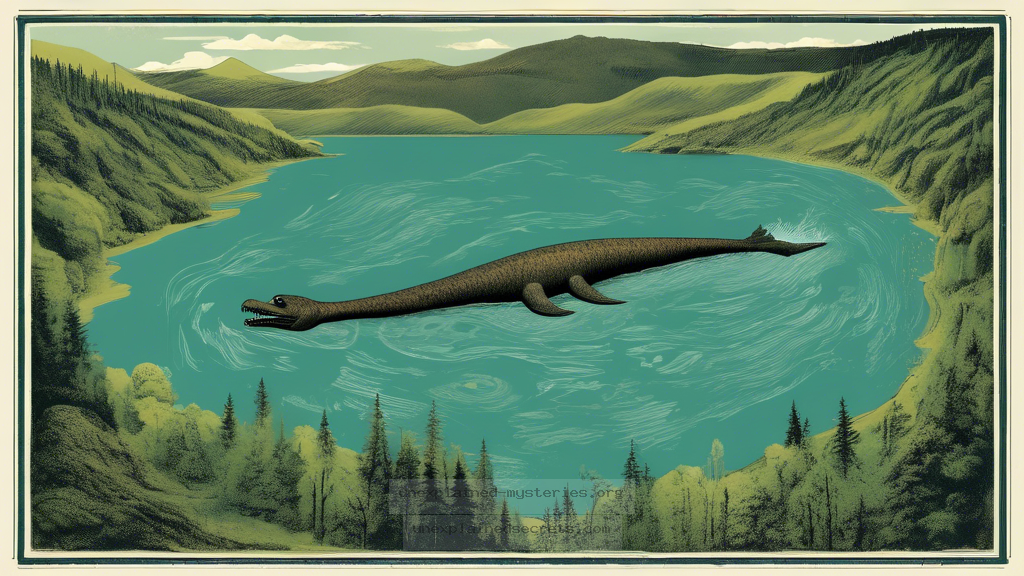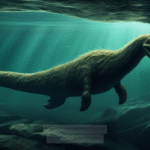What Secrets Do the Sonar Detections of the Loch Ness Monster Hold?
What Secrets Do the Sonar Detections of the Loch Ness Monster Hold?
The Loch Ness Monster, affectionately known as “Nessie,” has captivated the imagination of countless individuals since the first reported sighting in the 6th century. Among the many methods employed to search for evidence of this elusive creature, sonar technology has emerged as a critical tool in modern investigations. The question of what secrets these sonar detections hold is not only intriguing but also pivotal in understanding whether Nessie is a mere legend or a reality lurking beneath the surface of Loch Ness. In this blog post, we will delve into the history of sonar explorations in Loch Ness, explore the core concepts surrounding these technologies, analyze various sonar detection cases, and discuss the implications of these findings for the ongoing search for the Loch Ness Monster.
Historical Context of Loch Ness Investigations
The legend of the Loch Ness Monster dates back to ancient times, with the first recorded sighting attributed to St. Columba in 565 AD. However, modern interest in the creature surged in the 1930s with the publication of the infamous “surgeon’s photograph” in 1934, which purportedly showed Nessie rising from the depths. This spurred a series of investigations, culminating in the use of sonar technology in the mid-20th century.
In 1954, the first significant sonar exploration was conducted by the Loch Ness Phenomena Investigation Bureau (LNPIB). Using sonar equipment, investigators aimed to map the depths of the loch and identify any large, unidentified creatures. This initial foray into sonar exploration laid the groundwork for future expeditions, including those in the 1980s and 1990s, which utilized more advanced technology.
Core Concepts of Sonar Technology
Sonar, which stands for Sound Navigation and Ranging, operates on the basic principle of emitting sound waves and measuring their reflection off objects. There are two primary types of sonar: active and passive. Active sonar sends out sound pulses and listens for echoes, while passive sonar listens for sounds made by objects within the water.
In the context of Loch Ness, active sonar has been the primary method used to search for Nessie. By sending sound waves down into the depths, researchers can identify objects based on the time it takes for the sound waves to return. This technology has been pivotal in mapping the loch’s underwater topography and identifying potential anomalies that could indicate the presence of a large creature.
Documented Cases: Notable Sonar Detections
Several notable sonar detections have fueled the intrigue surrounding the Loch Ness Monster. One of the most famous cases occurred during the 1980s when a team of researchers led by the Loch Ness Investigation Bureau conducted extensive sonar scans. They reported detecting a large, unidentified object approximately 800 feet below the surface. This detection sparked excitement and speculation about the existence of Nessie.
Another significant instance happened in 2003, when a team from the University of Southampton conducted a sonar survey of Loch Ness. They utilized advanced sonar technology and reported the detection of what they described as a “large object” moving through the water. While the team was cautious in their conclusions, the detection added to the body of evidence suggesting that something unusual may be lurking in the depths.
The Implications of Sonar Findings
The findings from sonar detections in Loch Ness have significant implications for both cryptozoology and marine science. Firstly, these detections raise questions about the biodiversity of the loch. Could there be undiscovered species residing in its depths? The sonar readings suggest the presence of large objects, which could indicate the existence of an unclassified aquatic creature or a group of creatures.
Additionally, sonar technology has provided valuable insights into the underwater landscape of Loch Ness. The loch is one of the deepest bodies of freshwater in the UK, with depths reaching over 230 meters (755 feet). Understanding its underwater topography is crucial for future investigations, as it can help researchers identify habitats that could support large aquatic creatures.
Alternative Perspectives on Sonar Findings
While sonar detections have provided tantalizing evidence of potential large creatures in Loch Ness, alternative perspectives argue that many of these findings can be explained by more mundane phenomena. For instance, sonar readings may be influenced by underwater structures, schools of fish, or even the unique acoustics of the loch itself.
Critics also point out that sonar technology is not infallible. False positives can occur, leading to misinterpretations of the data. Additionally, skeptics argue that the lack of concrete evidence, such as physical remains, renders the sonar findings inconclusive in proving the existence of Nessie.
Common Misconceptions About Sonar Technology
There are several misconceptions surrounding sonar technology that often cloud the understanding of its role in Loch Ness investigations. One common belief is that sonar can definitively identify creatures. In reality, while sonar can detect objects and provide a visual representation, it cannot determine the exact nature of those objects without further investigation.
Key Point: Sonar technology is an essential tool for detecting large objects underwater, but it is not a foolproof method for identifying species.
Another misconception is that sonar can capture images similar to traditional photography. In fact, sonar provides a representation of the underwater environment that is more akin to a topographical map than a photograph, which can lead to misinterpretations of what is detected.
Best Practices for Investigating Loch Ness
For those interested in investigating the Loch Ness Monster, employing best practices is crucial. Firstly, researchers should use a combination of sonar technologies to cross-verify findings. Utilizing both active and passive sonar can provide a more comprehensive understanding of the underwater environment.
Additionally, collaborating with marine biologists and acoustics experts can enhance the quality of investigations. Understanding local ecosystems and the behavior of aquatic animals can help distinguish between potential cryptids and known species.
Best Practice: Always corroborate sonar findings with physical evidence to strengthen claims of potential discoveries.
Future Developments in Loch Ness Research
The future of Loch Ness research is promising, with advancements in technology paving the way for more sophisticated investigations. Drones equipped with sonar sensors and high-resolution cameras are becoming increasingly accessible and could provide new insights into the loch’s depths.
Furthermore, artificial intelligence (AI) is being explored in analyzing sonar data. AI algorithms can identify patterns and anomalies in large datasets, potentially leading to more accurate interpretations of sonar findings. As technology continues to evolve, the quest to uncover the truth behind the Loch Ness Monster may finally yield conclusive results.
Conclusion: What Lies Beneath Loch Ness?
In summary, the sonar detections of the Loch Ness Monster hold a wealth of secrets that continue to intrigue and baffle researchers. While numerous sonar expeditions have reported large unidentified objects within the loch, the implications of these findings remain contested. The interplay between technology, scientific inquiry, and local legend creates a rich tapestry of mystery that surrounds Loch Ness.
As we look ahead, continuing to employ innovative technologies alongside traditional investigative methods will be vital in unraveling the enigmatic secrets of Loch Ness. Whether Nessie is a mere figment of folklore or a genuine creature hiding in the depths, the journey of exploration and discovery will undoubtedly continue to captivate audiences for years to come.
Other Articles
Recent Posts
- What Happened to Flight MH370? The Conspiracy Theories That Still Haunt Us
- What Secrets Lurk Within the Walls of the Infamous Trans-Allegheny Lunatic Asylum?
- What Evidence Supports the Existence of Bigfoot in the Pacific Northwest?
- What Happened to the Indus Valley Civilization? Unraveling the Mysteries of Ancient Urban Life
- Can Telepathy Be Scientifically Proven Through Laboratory Evidence?







